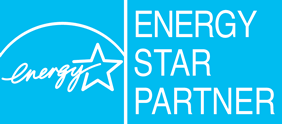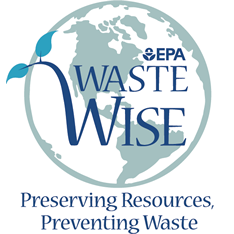




The company continues to be a sustainability leader by setting aggressive, measurable, absolute reduction goals. Raytheon now has 15 long-term sustainability goals in operations, supply chain, engineering, EHS and information technology. A scorecard has been developed to facilitate communication of goals and accomplishments to company leaders and the Board of Directors.
Sustainability
Reducing our environmental impact
Raytheon’s sustainability program seeks to protect our environment and conserve natural resources by engaging our employees, customers, suppliers and communities. Our focus areas include energy efficiency, greenhouse gas reduction, waste reduction and recycling, water conservation, design for sustainability, an eco-friendly supply chain, and environmental stewardship.
Sustainability governance structure
During 2011 we formalized our sustainability governance structure, with an enterprise effort led by our Senior Vice President and General Counsel. Governance is overseen by an Executive Advisory Council comprised of senior leadership team members. Interfacing directly with the Executive Advisory Council is a Steering Team made up of vice presidents led by the Vice President of Business Services. The enterprise sustainability team is comprised of subject matter experts from across the company. The team reports to the Steering Team and they develop and deploy strategies, programs and initiatives.

Significantly reducing greenhouse gas emissions
Raytheon began measuring and reducing its greenhouse gas emissions footprint in 2002 when it joined the U.S. Environmental Protection Agency’s (EPA) Climate Leaders Program. Since then, Raytheon has cut greenhouse gas emissions by 30%, preventing over 750,000 metric tons of emissions cumulatively. Last year, the company exceeded its 10% greenhouse gas reduction goal four years ahead of schedule, by reducing emissions 16% from the 2008 baseline.
In 2011, the company’s greenhouse gas emissions were 522,000 metric tons of carbon dioxide equivalents. Approximately 92% of the emissions are related to the company’s energy consumption. The company’s greenhouse gas emissions consisted of 82% in indirect emissions (mainly purchased electricity) and only 18% in direct emissions (mainly natural gas usage).








Founding supporter of the destination gigaton initiative
Raytheon is a founding supporter of the Destination Gigaton Initiative, a climate program developed by the World Wildlife Fund and the Carbon Disclosure Project®. This initiative encourages industry to reduce greenhouse gas emissions by approximately one gigaton, by 2020, in line with scientifically based climate targets.
Energy management at Raytheon
Energy consumption dropped 9% since 2008, and has declined 17% since 2002, cumulatively reducing costs by $17 million since 2008 and $80 million since 2002. These reductions were achieved through energy conservation, hundreds of energy efficiency projects, and millions of dollars of equipment upgrades.
Raytheon awarded Energy Star® sustained excellence
The EPA awarded Raytheon the 2012 ENERGY STAR® Sustained Excellence Award for our successful strategies and programs to reduce energy consumption, improve energy efficiency and cut greenhouse gas emissions. This is the fifth consecutive year that Raytheon has received the Sustained Excellence Award, and the eighth time in 12 years that we have been recognized under the ENERGY STAR program.
 For the fifth consecutive year, Raytheon received the EPA’s 2012 ENERGY STAR Sustained Excellence Award, the highest honor given to ENERGY STAR partners.
For the fifth consecutive year, Raytheon received the EPA’s 2012 ENERGY STAR Sustained Excellence Award, the highest honor given to ENERGY STAR partners.

Renewable energy and the EPA's green power partnership
We are well on our way to achieving our 2015 goal to purchase or generate 5% of the company’s electricity consumption from renewable energy sources. In 2011, 4%, or 36,000 megawatts, of our electricity was purchased from renewable energy sources, including wind farms in Indiana and Iowa, and a landfill gas project in Texas.
Raytheon joined the EPA’s Green Power Partnership program in 2011 to further its commitment to renewable energy. We were recognized by the EPA as a “Top Green Power Purchaser” on the Fortune 500 List.



Five North Texas Raytheon sites are now powered by a source of renewable energy — energy produced from methane gas emitted from a local landfill. The gas-to-energy landfill project is one of many aggressive steps Raytheon has taken to reduce its carbon footprint and operate more sustainably.

Sustainable buildings
Raytheon seeks to incorporate sustainability elements into the design, construction and operations of our facilities. The company utilizes the sustainability criteria and guidelines contained in the Leadership in Energy and Environmental Design (LEED) system, developed by the U.S. Green Building Council. Raytheon has LEED certification at three new construction and two commercial interior projects and several LEED projects are in process.
Highest recycling rate achieved
Raytheon continues to aggressively pursue recycling of waste. In 2011, Raytheon achieved its highest recycling rate to date, reusing or recycling 68% of the solid waste generated.

Diverting wastes from landfills and incinerators
We divert solid waste from landfills and incinerators to minimize the impact on the environment. Since 2008, the amount of solid waste disposed of in landfills and incinerators has been reduced 30%. We have reduced our solid wastes by 45% and our hazardous waste by 65% since 2004, normalized by revenue.
Raytheon named Wastewise partner of the year
In 2011, the EPA selected Raytheon as the WasteWise Partner of the Year in the large business category. The national award recognizes Raytheon’s environmental commitment and outstanding achievements in waste reduction, recycling, and eco-friendly procurement.
















 Raytheon has been named a 2011 WasteWise Partner of the Year by the EPA. The national award recognizes Raytheon’s environmental commitment and outstanding achievements in reducing waste, recycling, and eco-friendly procurement.
Raytheon has been named a 2011 WasteWise Partner of the Year by the EPA. The national award recognizes Raytheon’s environmental commitment and outstanding achievements in reducing waste, recycling, and eco-friendly procurement.
Green information technology (IT)
Raytheon’s green IT initiative generates significant cost savings while still innovatively supporting internal customers’ IT needs. Energy reductions have been achieved through server virtualization, modified data center design and more efficient use of computers in data centers. Since 2008, Raytheon has reduced its power demand for server rooms equal to the power demand of 2,500 homes — and reduced annual expenses for equipment and electricity by more than $26 million.
Eco-friendly supply chain
Raytheon is integrating sustainability throughout its supply chain. Examples include:
- Use of washable plates and silverware and environmentally-preferable biodegradable materials in many of our cafeterias;
- Sourcing of paper containing 30% post-consumer recycled content;
- Electronic invoicing of suppliers, which in 2011 occurred with 82% of supplier invoices; and
- Automation and digitization of procurement processes, which in 2011 occurred with over 450,000 transactions.
Design for sustainability
We seek to integrate sustainability into our products by working to minimize the use of materials of concern and the potential for life cycle environmental impacts. Our engineers are currently targeting cadmium and hexavalent chromium in new and existing product designs, and working to identify less hazardous alternative materials.





Water conservation
We have reduced water use by 21% from 2008, exceeding our initial 10% reduction goal. We achieved these reductions through the use of 43 million gallons of recycled water, updated cooling towers, low-flow fixtures and innovative landscaping and irrigation techniques. We set a second, more aggressive goal last year to reduce water use by 25% between 2008 and 2015.
Environmentally responsible restoration
Raytheon invests significant resources in the responsible cleanup of past environmental contamination and in 2011 spent $21.8 million on environmental remediation. Raytheon is involved in 41 active remediation sites, with a future combined cost estimate of $227 million (present value of $152 million before recovery). The 41 sites include 22 former and nine current operating locations, as well as 10 third-party landfill and recycling locations. Nine of the 41 sites are classified as Federal Superfund sites.